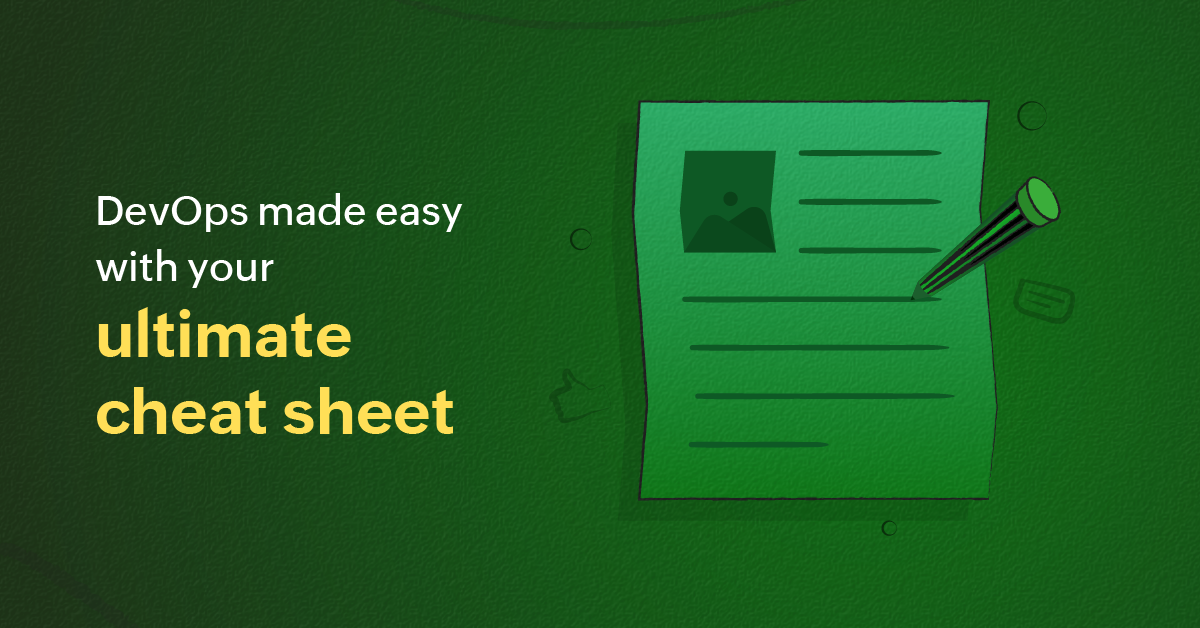Simplify DevOps tasks with this go-to cheat sheet: From Go programming to automation

DevOps is a dynamic field that bridges development and operations, ensuring seamless collaboration and faster software delivery. Whether you're just starting or looking to sharpen your skills, having quick access to essential concepts is invaluable. That’s why we’ve created a DevOps cheat sheet that covers everything from programming fundamentals to scripting and website building.
This cheat sheet is your go-to resource for mastering DevOps tools, languages, and workflows. Let’s dive into the key sections and see how they can elevate your learning.
An introduction to DevOps
This section lays the foundation for understanding DevOps principles, covering:
- What DevOps is and why it matters.
- Key practices like CI/CD, version control, and automation.
- Popular tools and technologies used in the DevOps ecosystem.
With this overview, you’ll see how DevOps fits into modern software development.
Go programming basics
Go (also known as Golang) is a powerful language for DevOps tasks, known for its efficiency and simplicity. This section provides a snapshot of Go’s core elements, covering:
- Setting up your first Go program.
- Understanding variables, data types, and basic operators.
- Writing clean, concise code using Go’s syntax.
Whether you're automating processes or creating tools, this guide will help you get started with Go in no time.
Understanding conditional statements
Conditional statements form the backbone of decision-making in programming. This section simplifies concepts like:
- If-else statements: Handling conditions with ease.
- Switch cases: Simplifying complex branching logic.
- Nested conditions: Managing multiple layers of decision-making.
With clear examples, you’ll learn how to implement logic effectively in your programs.
Understanding functions
Functions allow you to break down your code into reusable blocks. This section covers:
- Writing and calling functions in Go.
- Understanding function arguments and return types.
- Leveraging anonymous and higher-order functions for flexibility.
Mastering functions will make your code more modular and easier to maintain.
Loops
Loops are essential for handling repetitive tasks in programming. In this section, you’ll learn about:
- For loops: The workhorse of iteration in Go.
- While loops: Controlling loops with conditions.
- Nesting loops to handle complex data structures.
By the end, you’ll be able to write efficient, loop-driven logic for a variety of scenarios.
Maps and structs
Data organization is critical in DevOps. This section introduces:
- Maps: Key-value pairs for storing dynamic data.
- Structs: Custom data types for structured information.
- Manipulating these data structures with Go's built-in methods.
This knowledge will enable you to store, retrieve, and process data effectively.
Bash scripting
Bash scripting is a staple in DevOps for automation. This section covers:
- Writing simple and advanced Bash scripts.
- Using variables, loops, and conditional statements in Bash.
- Automating common tasks like backups, file manipulation, and deployments.
With these scripts, you’ll save time and reduce manual work.
Using the command line
The command line is a powerful tool for any DevOps professional. This section provides:
- An introduction to basic commands for navigation, file handling, and system management.
- Advanced commands for networking, permissions, and process management.
- Tips for customizing your command-line environment for efficiency.
You’ll learn to navigate and control systems like a pro.
Website building and styling
DevOps often intersects with web development. This section covers:
- The basics of HTML and CSS for structuring and styling web pages.
- Using responsive design techniques for mobile-friendly layouts.
- Tips for deploying and maintaining websites in a DevOps workflow.
By combining these skills, you’ll be well-equipped to handle full-stack responsibilities.
Your ultimate DevOps companion
This DevOps cheat sheet
isn’t just a learning resource—it’s a productivity booster designed to make your day-to-day work easier. Whether you’re writing code, managing infrastructure, or automating processes, this cheat sheet ensures you have all the essentials at your fingertips.
isn’t just a learning resource—it’s a productivity booster designed to make your day-to-day work easier. Whether you’re writing code, managing infrastructure, or automating processes, this cheat sheet ensures you have all the essentials at your fingertips.
Start mastering DevOps today with this comprehensive cheat sheet and streamline your journey to becoming a DevOps expert!
Topic Participants
Arun Madhavan